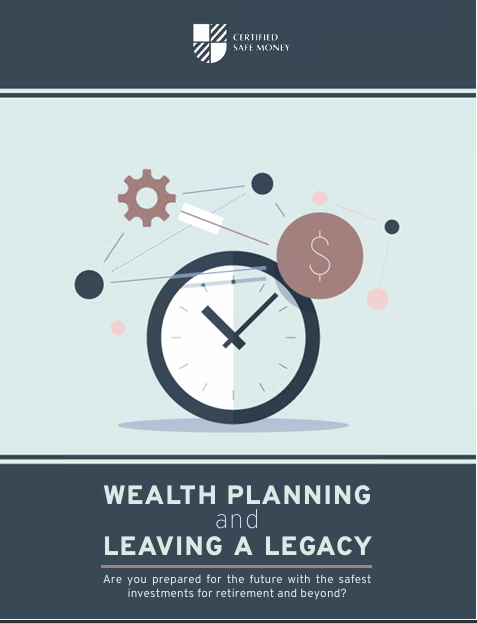Key Takeaways:
- Health insurance primarily covers medical expenses, while long-term care insurance extends its coverage to activities of daily living (ADLs) and non-medical services, addressing the limitations of traditional health insurance.
- The need for long-term care insurance arises from the high costs associated with long-term care services and the substantial likelihood that individuals will require such care during their lifetime, making it a crucial financial safety net.
IntroductionIn the ever-evolving landscape of healthcare costs in the United States, it’s becoming increasingly challenging to afford the necessary care and support, from hospital stays to prescription drugs and assisted living expenses. A significant portion of the population finds it difficult to cope with these rising costs, according to the Kaiser Family Foundation (KFF). One effective strategy to manage these expenses and mitigate potential financial burdens is insurance. However, it’s vital to understand the distinction between health insurance and long-term care insurance and recognize when you may need both types of coverage.
Health Insurance vs. Long-Term Care Insurance: What Sets Them Apart?
To grasp the difference between health insurance and long-term care insurance, it’s essential to define long-term care. The National Institute on Aging describes long-term care as services designed to meet an individual’s health or personal care needs when they can no longer perform daily activities independently. Health insurance primarily covers medical expenses related to treating illnesses or injuries, including doctor visits and prescription drugs.Long-term care insurance, on the other hand, extends its coverage to activities of daily living (ADL), such as bathing and eating, and non-medical services like meal preparation, housekeeping, and transportation. While Medicare and Medicaid may provide some coverage for specific situations and durations, traditional health insurance typically lacks this comprehensive non-medical coverage. The scope, terms, and amount of coverage differ significantly between health insurance and long-term care insurance.
Why Consider Long-Term Care Insurance?
The need for long-term care insurance arises from the limitations of health insurance, which often doesn’t cover support for ADLs and related needs. Long-term care insurance acts as a financial safety net, protecting against potentially substantial costs associated with long-term care services. For instance, the average monthly cost of a home health aide is around $5,000, while a semi-private room in a nursing home facility can cost nearly $8,000, as reported by Genworth.One might assume the likelihood of needing long-term care is low, but statistics tell a different story. The Administration for Community Living, part of the U.S. Department of Health & Human Services, reveals that a 65-year-old has nearly a 70% chance of requiring long-term care at some point in their life. Long-term care insurance offers asset protection as individuals face diminishing abilities and escalating costs over time. Diseases like Alzheimer’s or progressive injuries can turn manageable expenses into financial burdens.
Acquiring Long-Term Care Insurance
Long-term care insurance can be obtained through various channels, including insurance agents at long-term care insurance providers, independent insurance agencies offering policies from multiple insurers, and financial advisors well-versed in insurance products. Additionally, some policies combine long-term care insurance with life insurance, creating hybrid coverage options.While selecting long-term care insurance, meticulously examine policy details and strike a balance between costs and coverage. The intricacies of insurance can be perplexing, so consider consulting a trusted professional who can guide you through the available options, whether it’s traditional long-term care insurance or hybrid alternatives.
Estimating the Cost of Long-Term Care Insurance
The cost of long-term care insurance varies based on factors such as the chosen policy type and the insured individual’s age. For example, according to the American Association for Long-Term Care Insurance (AALTCI), a 55-year-old male opting for a policy with level benefits starting at $165,000 can expect an average annual premium of $900. Meanwhile, a 65-year-old male with the same policy might pay around $1,700 annually. Policies with benefits growing at 5% annually would command higher premiums.Notably, women face higher premiums. A 65-year-old female might pay an average of $2,700 annually for a policy with level benefits starting at $165,000, while the same policy with annual benefit growth could cost approximately $7,225 annually.Given that long-term care insurance costs rise with age, insurance experts recommend exploring policies around age 40 rather than waiting until retirement is imminent.
Conclusion
While health insurance plays a crucial role in covering common medical needs, it often falls short in addressing long-term care expenses. Considering that a significant percentage of seniors will require long-term care at some point, long-term care insurance emerges as a vital tool to shield against this financial risk. It’s essential to compare policies carefully and consult with professionals who can help you navigate the complexities, whether you opt for traditional long-term care insurance or hybrid alternatives. Ultimately, securing adequate long-term care insurance can offer the peace of mind needed to navigate the uncertainties of healthcare costs in 2024 and beyond.
Contact Information:
Email: rick@andrikfinancial.com
Phone: 9568933225
Bio:
Rick Viader is a Federal Retirement Consultant that uses proven strategies to help federal employees achieve their financial goals and make sure they receive all the benefits they worked so hard to achieve.
In helping federal employees, Rick has seen the need to offer retirement plan coaching where Human Resources departments either could not or were not able to assist. For almost 14 years, Rick has specialized in using federal government benefits and retirement systems to maximize retirement incomes.
His goals are to guide federal employees to achieve their financial goals while maximizing their retirement incomes.














